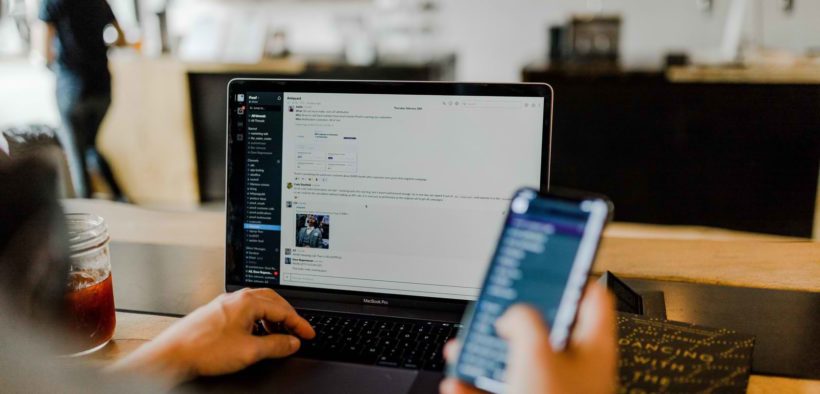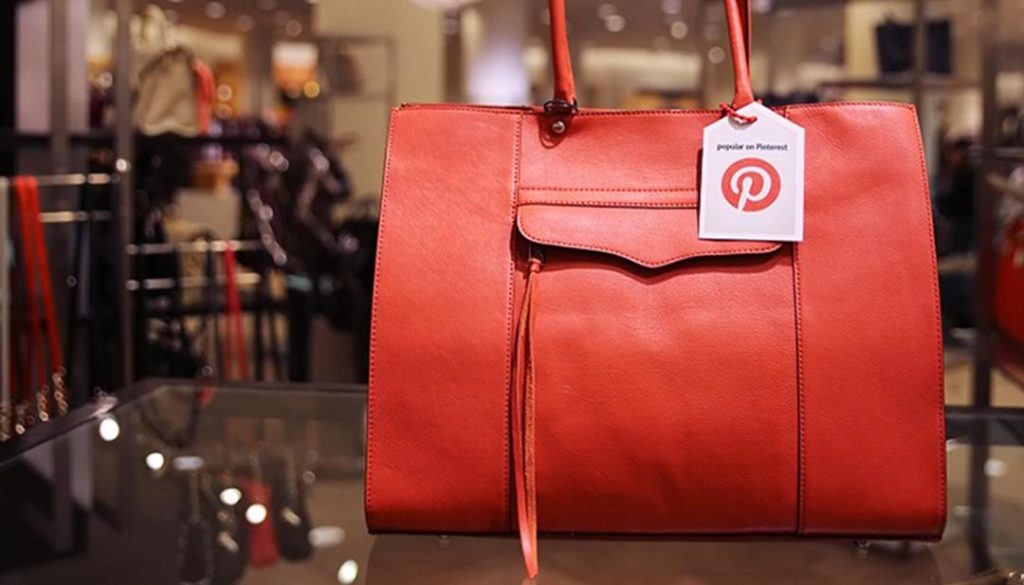17 Omnichannel Strategies and a Breakdown of Tactics
Share

Most retailers are failing at creating successful omnichannel strategies.
Despite the vast majority (90%) of brands having an omnichannel strategy in place, only 8% feel like they are succeeding.
This omnichannel case study is going to break down one of the most successful retailers, and how they use omnichannel marketing to drive revenue.
Read on to learn the real strategies and tactics Nordstrom uses across the three main components of any omnichannel strategy:
- Personalisation – Understanding your customer enables you to personalize each touchpoint across devices and locations.
- Fulfillment – Connecting offline and online channels through fulfillment provides an incredible convenience to customers and sales uplift and brand loyalty.
- Customer – You need to collect and connect customer behaviour, demographics, product/category affinities, and purchase history across all channels in one place.
How Nordstrom Personalizes Customer Experiences With Omnichannel Marketing
Nordstrom has long been a leader in Omnichannel retailing. Underpinning their strategy is an extreme focus on what has always distinguished Nordstrom: superior customer service, convenience, and understanding customer wants.
Omnichannel marketing means being where your customers are. It requires the active management of multiple channels to drive sales, and systems to support personalized engagements.
Our customer strategy focuses on providing a seamless and high-quality experience across all Nordstrom channels. – Nordstrom 10k, 2016
Omnichannel marketing means being where your customers are. It requires the active management of multiple channels to drive sales, and systems to support personalised engagements.
These first few examples show how Nordstrom personalises the customer experience based on intent – connecting social discovery and eCommerce fulfillment seamlessly.
Connecting Social to Bricks & Mortar
Using Pinterest to Supercharge Discovery and Drive Retail Traffic
 Since 2013, Nordstrom has integrated Pinterest directly to their stores. They first did this by highlighting their most popular items on Pinterest with in-store displays.
Since 2013, Nordstrom has integrated Pinterest directly to their stores. They first did this by highlighting their most popular items on Pinterest with in-store displays.
 In 2018, Nordstrom is taking their Pinterest game to new levels.
In 2018, Nordstrom is taking their Pinterest game to new levels.
Pinterest recently released a new “Pincode” feature, which allows shoppers to scan a code and be taken to a Pinterest board.
This gif made by the Pinterest team shows exactly how it works.
- Nordstrom shoppers scan the Pincode while in-store
- Shoppers are taken to an curated board of gifts under $100
- Nordstrom sell more
You can see the actual board Nordstrom uses here.
Using YouTube to Extend Customer Service
In-store, Nordstrom associates are able to guide clients to the purchase purchase with their expert style advice.
With video, Nordstrom is able to recreate this type of customer service online. In fact, video has become key for educating and motivating clients on how to put wardrobes together.
The final call to action is perfect.
It underlines the shortcomings of a video, and invites the customer to come in and talk to their own personal style expert.
Connecting Social to Online Stores

Nordstrom also uses social to drive online sales.
One example is through Instagram’s Shoppable Posts. Mary Beech, EVP and Chief Marketing Officer of Kate Spade explains:
Traditionally, our customer had turned to Instagram for inspiration, and we’re seeing that she’s reacting positively to the new shopping experience, which allows her to seamlessly tap and shop the product – going from inspiration to information to purchase in just a few steps.
Below are some quick screenshots that illustrate the customer’s journey from social to purchase.
First, Nordstrom shows the products in native Instagram posts. When they click the product, the next screen is given (still in the Instagram app).
This screen carries more product information, as well as clear product photos that allow the customer to determine if they want to buy. Finally, when a customer clicks “Shop Now” they are brought to the online store.



Key Takeaways
Customers use social for discovery and education.
By meeting customers where they are, you can engage with shoppers early in the buyer journey with entertaining or educational content.
Other Personalization OmniChannel Marketing Tactics Used
I want to quickly list a few other ways Nordstrom personalises their interactions with their customers.
Personalized in-app communication
Loyalty Programs – Loyalty program that rewards shoppers points regardless of where you complete the purchase.
Congruent Experience Across Devices
Buy Online, Pickup in Store – Customers can purchase items and pickup them up in store.
Read 23 Advanced eCommerce Personalisation Tactics That Work
How to fuel Omnichannel Retailing with Cross-Channel Fulfillment
Nordstrom recognizes that in order to succeed at omnichannel, they must support fulfillment across all of their channels.
Again, their guiding principle is convenience and customer service.
As Brian Gill, the technology senior vice president explains –
“The retail environment is changing faster than ever, but the value of service, speed, convenience and newness remain constant,”-Brian Gill
Connect your offline and online worlds with your store app
 In 2016 Nordstrom added a “Reserve and Try in Store” feature for their in-app shoppers.
In 2016 Nordstrom added a “Reserve and Try in Store” feature for their in-app shoppers.
Nordstrom shoppers often look up products before going in-store to try products on and purchase. With this feature enables, Nordstrom allows customers to place items “on reserve”.
Nordstrom completely nails the execution.
Once a store clerk has collected the reserved items and placed them in a dressing room with the customer’s name attached to the door, a simple text message is sent, letting the shopper know their reserved items are waiting for them.
Items are kept until the store closes the next day.
Evolve your business model to fit customer expectations
The most successful digital first retail stores are beginning to open phsycial space retail stores.
Warby Parker operates upwards of 63 stores. Likewise, Bonobos and Moda Operandi have already opened their first physical stores.
Nordstrom is taking notice and action.
Their latest effort is opening a store where the merchandise is on display but you can’t take it home.
- No inventory
- Delivery Only
- Onsite Tailoring
- Full service Drink Bar
- Nail Salon
While the average department store spans over 140,000 square feet, the first Nordstrom Local came in right at 3,000.
Keeping in line with their omnichannel strategy, the boutique supports returns of online purchases and curbside pickup of online orders. The store also highlights what distinguishes Nordstrom from its competitors: service.
In this case, a full service bar is offered where shoppers can receive personal advice from a professional stylist – not to mention enjoy the other drink and nail care amenities.
Other Omnichannel Fulfillment Tactics Used
In addition to these omnichannel fulfillment strategies, Nordstrom utilizes a number of other tactics including:
- Cross channel inventory – Store inventory is shared across all channels
- In-store inventory online – Physical store availability is able to be seen online
- Curbside Pickup – Shoppers can purchase online, drive to a store, text an associate, and have their cart ran from in-store to car-door.
- In-store purchase w/ Home Delivery – In reverse, shoppers can enjoy in-store customer service, make a purchase, and opt to not carry around bags as they continue shopping.
Connecting Data across Brands and Platforms

Powering all of Nordstrom’s omnichannel strategies and tactics is the ability to unify customer data.
Data fuels omnichannel strategies and tactics. The goal is simple: get all of your customer data in one place, make that data easily accessible, and use that data.
Like most retailers, expanding sales channels has been a major fulcrum of growth for the company. As the number of channels retailers use increase, so does the complexity and the need for data unification.
Today, retailers use a number of channels including:
- Multiple websites
- Physical Stores – Digital first brands such as Bonobos are launching physical stores.
- Wholesale – Increasingly, wholesale first customers are beginning to build relationships directly with consumers, while retailers have always expanded to wholesale once they reach scale.
- Mobile/App – Mobile conversion and traffic stats continue to grow.
- Telephone Orders
- Social Marketplaces – eBay, Facebook Marketplace, and chat marketplaces.
Nordstrom’s Many Sales Channels
Like most established retailers, Nordstrom’s uses a multitude of sales channels to connect with customers.
What separates Nordstroms (and makes their quest for omnichannel success that much more difficult) is the number of distinct brands the business manages.
As of March 20th, 2017 – Nordstrom operated 344 US stores and three major eCommerce platforms: Nordstrom.com, Nordstromrack.com/HauteLook, and TrunkClub.com.
While the majority of their retail stores fall under two brands (Nordstrom and Nordstram rack), they also operate Trunk Club clubhouses, Jeffery Boutiques, and “Last Chance”.
In addition to their eCommerce stores, Nordstrom also has a whole suite of customer facing apps where customers engage with the brand and complete orders.
All in all – Nordstrom’s sales channels include
Three Major Brands
- Physical Stores – 344 stores in the US
- eCommerce Stores – 3 total, one for each brand.
- Social Channels – A multitude of social channels for each brand including Pinterest, Instagram, Youtube, Facebook, and others.
- Mobile Apps – 3 total, one for each brand.
Connecting Customer Data
Despite this complexity, Nordstrom is able to connect customer data – creating a seamless experience even across brands.
Nordstrom unifies customer data across all of these brands and channels. Customer preferences, sales history, and information are stored in the same account – accessible by each brand and customer.
In other words, if a customer shops at Nordstroms, and then Nordstrom Rack, that information is kept together.
Other Omnichannel Data Unification Tactics
This fundamental ability to combine customer data empowers all of the omnichannel personalisation and fulfillment strategies.
Additionally, there are a few data unification tactics that Nordstrom uses to enhance the customer experience.
- Cross channel returns and exchanges
- Save preferred store
Next Steps…
Creating an effective Omnichannel strategy is not easy.
The first step is getting your data together in one place, and selecting a personalisation vendor that empowers you to build seamless, personal, customer experiences across platforms and devices.




















Follow us on social media